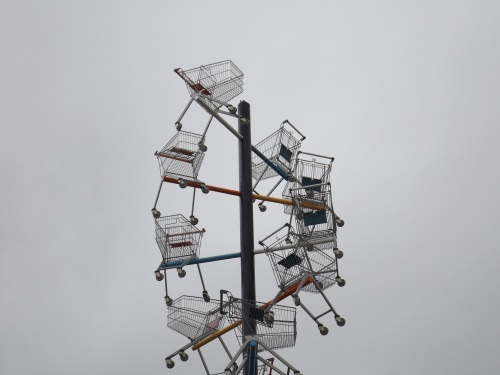The tragic death of 17 year old Jack Susianta near Lea Bridge on Wednesday afternoon is the front page story in today’s Daily Mirror (Friday 31 July 2015).
Jack drowned just below a footbridge, known as King’s Head Bridge, after running away from Police who had been called to help him. He jumped into the River Lea having run across North Millfields from his home in Clapton.
The subsequent search was between the footbridge, now decorated with flowers, and downstream Lea Bridge.
There are suggestions that the police were slow to enter the water. Around a hundred spectators, walkers and residents in the new flats, were allegedly advised not to jump into the water.
Today Lucy D’Orsi, the Metropolitan Police Commander for East London, made a long statement:
“Today’s headlines concerning the tragic story of Jack Susianta who drowned in the River Lea offers a clear picture of a complex situation. Or does it?
“Our thoughts are with Jack’s family – it is hard to comprehend the pain they must be feeling after losing a loved one so young. It’s also a traumatic event for the people on the river bank who witnessed the events unfold and the police officers involved in the incident. The call was not to investigate a crime but to help someone in distress. Reflecting on this point reminded me that policing is not all about crime. In fact over 60 per cent of what we are called to deal with in London is not crime. I, like my colleagues, joined policing to help people and that’s often the bit that is forgotton when people debate police activity.
“The Daily Mirror’s front page headline this morning, Friday 31 July, offers a definite conclusion – Police Refuse To Save Drowning Boy. No quotation marks, nothing to reflect our statement last night, Thursday, 30 July, that officers first tried to use a life aid and throw lines to him before an officer, who then needed assistance himself, entered dangerous water to try and safe Jack’s life. Met divers also entered the water in a rescue operation to try and save Jack. I saw no mention of this.
“When police have been involved in an incident where someone has died we must refer ourselves to the Independent Police Complaints Commission so they can look at the circumstances of what has happened. We have done this and this means that the detail and context around what exactly happened and the actions that were taken may take time to come out. Often when this happens the story is no longer front page news. It is only fair to Jack’s family and all those concerned in this case that we do not try to pre-empt the investigation by providing more detail than the brief description of events offered in yesterday’s statement. This feels frustrating but right.
“Our world is one of immediate news at a fast pace. We accept that headlines will be written before investigations have had time to run their course but this is sometimes disappointing and hard to understand. I think it is only fair on those involved in this incident to make sure that the way it is reported does reflect, for very valid reasons, the full context and the facts. Of course newspapers should quote the views of others but surely it would also be fair to reflect that the situation may, or may not be, more complex than some of the stories concerning this incident are reflecting. That might include putting quotation marks around a headline which is presented as a very factual statement.
“My colleagues across London deal with high risk situations everyday, putting themselves at risk and running to things that most would run from. It’s not easy for them or their families and therefore when judged I believe they deserve to be judged fairly.
“Followers of our Facebook pages will regularly read stories of officers who have been involved in incidents where lives have been saved, including water rescues. They are humbling stories which make me proud of the service we provide to Londoners. These rarely get reported in the national media but I recognise that in a democratic society which is proud of freedom of speech it is not for the police to suggest what is or is not editorially important. As it happens these Facebook posts are among our most popular.
“Our officers deserve a fair and independent investigation into how an incident such as this has unfolded but most importantly so do Jack’s family who are dealing with grief which most of us hope never to have to experience. A proper explanation of the circumstances surrounding the incident is required for everyone and I don’t think that has been reflected in the way it has been presented so far in the media.”



